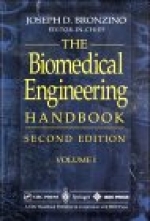Tab Article
This handbook defines the discipline of Biomedical Engineering by bringing together the core of knowledge that now makes up this rapidly growing field. The book is primarily written for the biomedical engineering professional who needs factual information on a particular topic or the professional from other engineering and medical disciplines who wants a comprehensive overview of the entire field. The second edition has been completely updated and revised.


